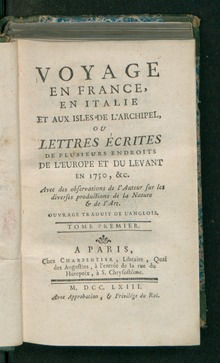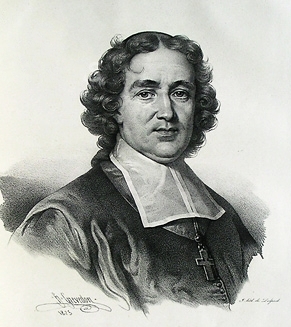
Esprit Fléchier was a French preacher and author, Bishop of Nîmes from 1687 to 1710.
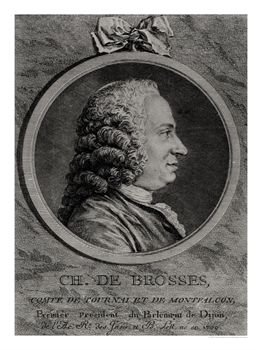
Charles de Brosses, comte de Tournay, baron de Montfalcon, seigneur de Vezins et de Prevessin, was a French scholar of the 18th century.
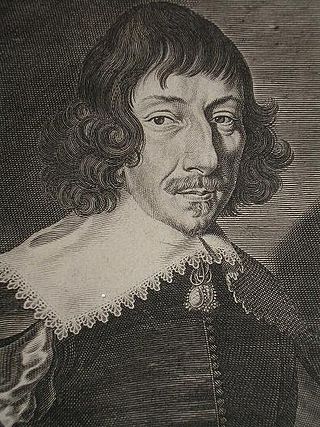
Charles Sorel, sieur de Souvigny was a French novelist and general writer.

The family of Dezallier d'Argenville produced two writers and connoisseurs, father and son, in the course of the 18th century. The father, Antoine-Joseph Dezallier d'Argenville (1680–1765) is now best known for writing the fullest French treatise on the French formal garden style of his lifetime, as well as books on natural history, and as a significant collector of old master prints.

Jean Paul Louis François Édouard Leuge-Dulaurier was a French Orientalist, Armenian studies scholar and Egyptologist.
Claude-Étienne Savary was an orientalist, pioneer of Egyptology and translator of the Qur'an.

Pierre-Jean Grosley was a French man of letters, local historian, travel writer and observer of social mores in the Age of Enlightenment and a contributor to the Encyclopédie ou Dictionnaire raisonné des sciences, des arts et des métiers.

Robert Arnauld d’Andilly was a French conseiller d’État, specialising in financial questions, in the court of Marie de' Medici. By the elegance of his language, he was among the major poets, writers and translators of 17th century French classicism. A fervent Catholic, he played an important role in the history of Jansenism and was one of the Solitaires of Port-Royal-des-Champs. He was also renowned for his part in the development of the pruning of fruit trees, to which he was devoted.

Antoine Jay was a French writer, journalist, historian and politician.
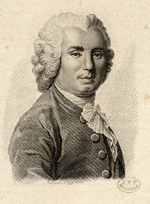
Théophile de Bordeu was a French physician.

Charles-Antoine Jombert was a French bookseller and publisher.

Alexandre-Frédéric-Jacques Masson, marquis de Pezay, was an 18th-century French soldier, courtier and man of letters.
Augustin-Louis, marquis de Ximénès was an 18th-century French poet and playwright.
Edme-Louis Billardon de Sauvigny was an 18th–19th-century French man of letters and playwright.
Louis-Joseph Lavallée marquis de Boisrobert, called Joseph Lavallée was an 18th–19th-century French polygraph and man of letters.
Margaret of Clermont was a countess consort of Flanders twice by marriage to Charles I, Count of Flanders and Thierry, Count of Flanders. She was ruling suo jure countess regnant of Amiens 1118–1132.
Robert-Martin Lesuire was a French writer. Several of his works are forerunners of crime fiction - a French dictionary of the subject states that "by the richness of his themes, he inspired a number of writers of popular crime novels in the 19th century". He was also a member of Rouen's Académie des sciences, belles-lettres et arts.
Jacques Anthony Louis Beltrand was a French engraver.
Hercule Audiffret, known as "le Père Hercule", was a French orator, religious writer and Superior General of the Congrégation des Doctrinaires. He was the maternal uncle of Esprit Fléchier.
